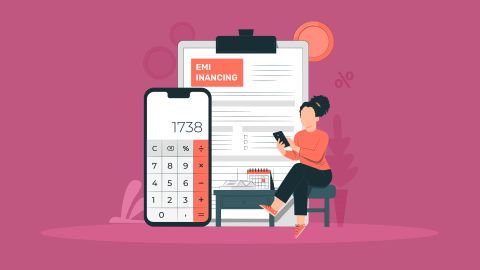A computer is an electronic device that can store, retrieve, and process data to perform various tasks efficiently. COMPUTER stands for Common Operating Machine Purposely Used for Technological and Educational Research. Modern computers range from large servers to handheld devices, making them essential for everyday and professional use. When discussing the advantages and disadvantages of computer, it is essential to understand that, at its core, a computer functions by performing calculations and operations through its central processing unit (CPU), which is considered the brain of the device. It operates under the control of instructions stored in its own memory unit, allowing it to execute complex series of operations through basic programming. Computers vary widely in size and capacity, ranging from giant servers that power large businesses to handheld mobile devices.
With computers becoming essential tools in modern life, investing in a quality device is important for productivity and convenience. Check your eligibility for a Bajaj Finserv Insta EMI Card to purchase the latest computer models with easy monthly instalments. You may already be eligible, find out by entering your mobile number and OTP.
What is a computer?
A computer is an electronic device that processes data, performs calculations, and executes various tasks based on instructions provided by software. It consists of hardware components such as a central processing unit (CPU), memory, storage, and input/output devices. Computers help in solving complex problems, automating tasks, and improving efficiency across multiple sectors.
Types of computers
Computers can be classified into different types based on size, functionality, and purpose:
- Supercomputers – High-performance systems used for scientific research, weather forecasting, and simulations.
- Mainframe computers – Large, powerful systems that handle massive amounts of data for organizations and governments.
- Servers – Computers that manage networks, store data, and facilitate communication between multiple devices.
- Personal computers (PCs) – Desktops and laptops used by individuals for work, education, and entertainment.
- Embedded systems – Specialized computing devices found in appliances, cars, and industrial machines.
Key features of computer
- High-speed processing: Computers perform millions of calculations per second, enabling quick data handling and efficient execution of complex tasks.
As computing technology advances, accessing these high-speed processing capabilities has become more affordable through flexible payment options. Check your offers for a Bajaj Finserv Insta EMI Card today and bring home a powerful computer without financial strain. You may already be eligible, find out by entering your mobile number and OTP. - Vast storage capacity: They offer extensive storage options, allowing users to save and retrieve large volumes of data easily.
- Accuracy and reliability: With minimal human intervention, computers consistently perform tasks accurately, reducing errors in repetitive operations.
- Multitasking capabilities: They can run multiple applications simultaneously, boosting productivity and enabling smooth workflows.
- Versatility: Computers are adaptable, supporting various software and hardware to meet diverse personal and professional needs.
- Automation: They streamline tasks through automation, enhancing efficiency and freeing up time for more critical activities.
Check also: Top-rated computer keyboards in India
Advantages of computers
Computers have revolutionized how we work, communicate, and solve problems. Below are some major advantages:
1. Speed and efficiency
Computers process information rapidly, performing complex calculations within seconds. This enhances productivity in various industries such as finance, healthcare, and engineering.
2. Automation of tasks
Computers automate repetitive and mundane tasks, reducing human effort. They are widely used in industries like manufacturing, where they operate machinery with minimal supervision.
3. Storage and data management
With vast storage capabilities, computers can store, retrieve, and manage large amounts of data efficiently. Cloud storage solutions have further enhanced data accessibility and security.
4. Connectivity and communication
Computers facilitate real-time communication via the internet, emails, video conferencing, and social media, bridging distances between individuals and businesses globally.
5. Education and research
E-learning platforms, online libraries, and research databases make knowledge easily accessible. Computers support virtual classrooms, enhancing education and skill development.
6. Entertainment and creativity
From gaming to video editing, computers enable creativity and entertainment. Professionals use them for designing, music production, and animation, making them indispensable in creative industries.
7. Business and financial management
Companies use computers for accounting, data analysis, and financial planning. They improve accuracy in financial transactions and streamline business operations.
Investing in the right computing equipment can significantly enhance your business efficiency and performance. Check your eligibility for a Bajaj Finserv Insta EMI Card to acquire essential business computing tools with convenient EMI options. You may already be eligible, find out by entering your mobile number and OTP.
Disadvantages of computers
Despite their numerous benefits, computers have some drawbacks:
1. Dependency and overuse
Excessive reliance on computers can lead to reduced cognitive abilities and problem-solving skills, making users overly dependent on technology.
2. Health issues
Prolonged screen exposure may cause eye strain, headaches, and posture-related problems. It can also contribute to conditions such as carpal tunnel syndrome.
3. Cybersecurity threats
Computers are vulnerable to hacking, malware, and phishing attacks. Cybersecurity threats can lead to data breaches, identity theft, and financial losses.
4. Unemployment due to automation
The rise of automation and artificial intelligence (AI) has led to job displacement, particularly in industries where manual labor is being replaced by machines.
5. High initial costs and maintenance
Purchasing high-performance computers can be expensive. Regular maintenance, software updates, and repairs add to the cost of ownership.
6. Privacy concerns
With the rise of digital transactions and online activities, personal data is often collected and stored, raising privacy issues and potential misuse of information.
Check also: Amazon Laptop offers
List of available computers on EMI
Several online and brick-and-mortar retailers offer a range of available computers on EMI.
Brand |
Popular models |
Type |
Special offers |
Apple |
MacBook Air, MacBook Pro |
Laptop/Computer |
Zero down payment, Easy EMI Options, Flexible Repayment Tenure and Additional Benefits |
Dell |
Inspiron, XPS, Vostro |
Laptop/Computer |
Zero down payment, Easy EMI Options, Flexible Repayment Tenure and Additional Benefits |
HP |
Pavilion, Envy, Victus |
Laptop/Computer |
Zero down payment, Easy EMI Options, Flexible Repayment Tenure and Additional Benefits |
Lenovo |
IdeaPad, Legion, ThinkCentre |
Laptop/Computer |
Zero down payment, Easy EMI Options, Flexible Repayment Tenure and Additional Benefits |
Acer |
Aspire, Swift, Nitro |
Laptop/Computer |
Zero down payment, Easy EMI Options, Flexible Repayment Tenure and Additional Benefits |
Asus |
Vivobook, ROG, TUF Gaming |
Laptop/Computer |
Zero down payment, Easy EMI Options, Flexible Repayment Tenure and Additional Benefits |
These premium computer models offer excellent performance for various needs, from professional work to gaming and creative pursuits. Check your offers for the Bajaj Finserv Insta EMI Card to purchase any of these computers with zero down payment options. You may already be eligible, find out by entering your mobile number and OTP.






